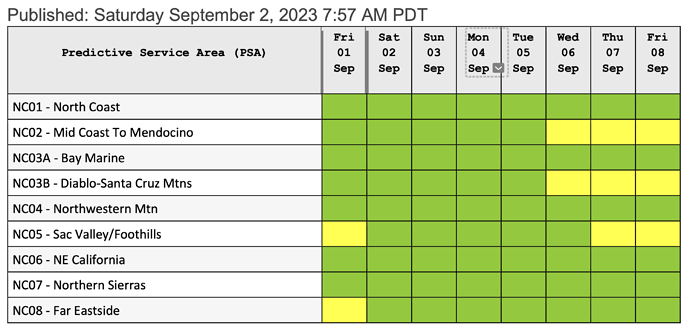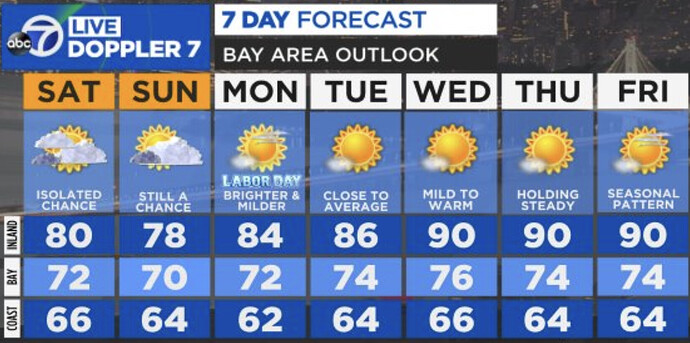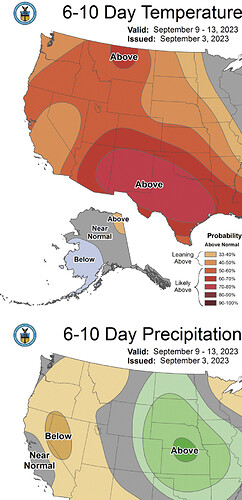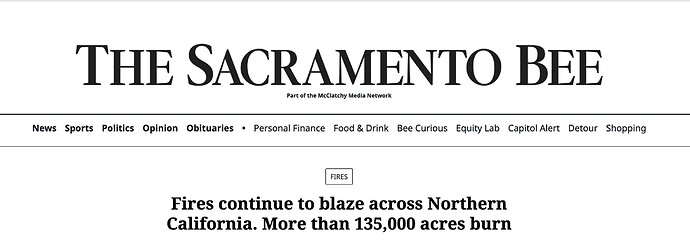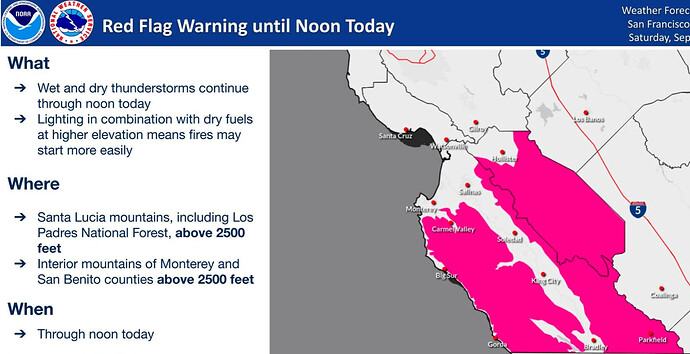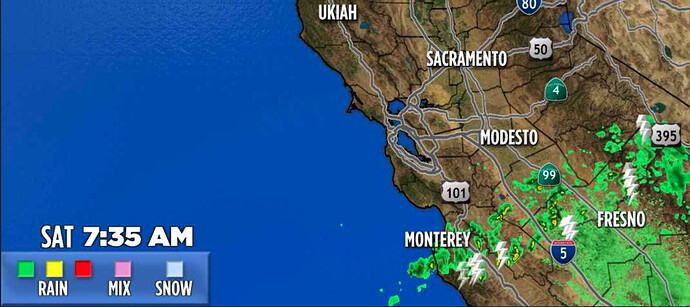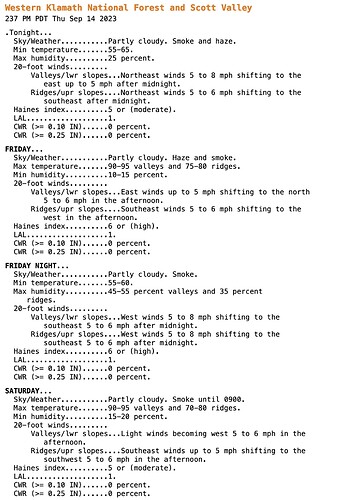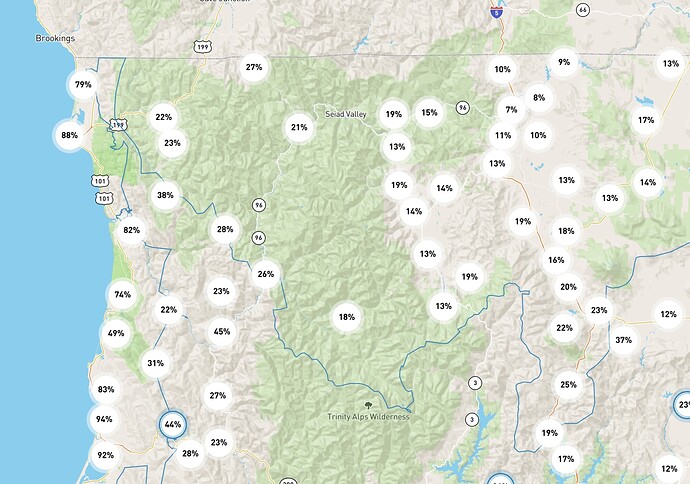Not much effect on live fuels, the soaking will impact the dead fuels. They will take some time to dry out. 1 hr fuels are primary drivers and receptive for spots. Those will dry out and carry fire until we see consistent wetting rains and cooler temps.
Biggest impact will be on the dead fuel and its contribution to large fire growth.
Would not be surprised to see some green grass shoots, especially in recent burn scars. Strangely… there is time for grass to green up and then die again…
NWS North ops: Saturday
RH values will gradually lessen during the weekend and next week but a very hot and dry airmass is not anticipated during the foreseeable future.
Can anyone remember a year that had somewhat of a return to peak season after a wet spell such as this? I’m sure it could happen but can’t think of one myself.
2018… everyone says that there was no rain before the Camp Fire, but that is not true. We had over 2 inches in some spots in Nops. I can remember several years where we had similar events only to have things pick up again. We entering offshore wind season the drying effects of the low RH and winds can be prolific.
This east based El Nino and changing SST will have impacts to us, there is just no clear pattern to see…
Climatology would suggest warmer along the coast and overall into the fall, but as last winter told us, there is a a lot of water vapor in the atmosphere( perhaps tied to Hungatonga ( spelling) ). That water vapor could certainly be impacting us.
This has certainly been a season of cut off lows and infrequent and weak offshore wind events. If we choose persistent forecasting then we could be in for a wet fall and early winter. Or… we could have warm fall and winds. I guess we will see.
I seem to recall getting some amount of rain in the Santa Rosa area prior to the Valley Fire in 2015, and the October Firestorm in 2017. I’m not convinced this is season ending rain. I don’t have measurements, but it rained Thursday and more last night in Arcata. Yet, when I picked up the dog’s chew toys in the back yard, the grass underneath was dry.
This is not a season ending event! As norcal74 mentions, offshore wind pattern can reverse the effects of a few inches of rain in a day or two. The sun is still high enough in the sky to support drying. Remember it is not the amount of rain that counts, it is the effects on the fuels you must watch, live and dead. Green grasses and weeds, 100 and 1,000 hr fuels soaked all the way or most of the way through. Live FM’s generally don’t recover much until early spring, so keep n eye on the weather.
Yeah I went on my honeymoon in late September and early October 2017 and I thought I was coming back for a layoff because of the rain and I was almost timed out, but I can back and went out for 33 days after I got back home.
Id make an off of the top of my head comparison to the fall of 2019. In mid September the Red Bank, Lime and South fires essentially got rained out by a deeper and wetter trough much later in the month. Spring/winter of 2019 was cold and wet (though clearly not as wet as 2023) but summer of 2019 was slow/normal. It never got super busy again but Tick/Getty/Kincade occurred in late October. This year is feeling more like that at the moment. Hilary has impacted SoCal and recent rains over the NW are/were substantial. The Klamath/Six Rivers ERC values where most of the IMT are deployed are in the tank.
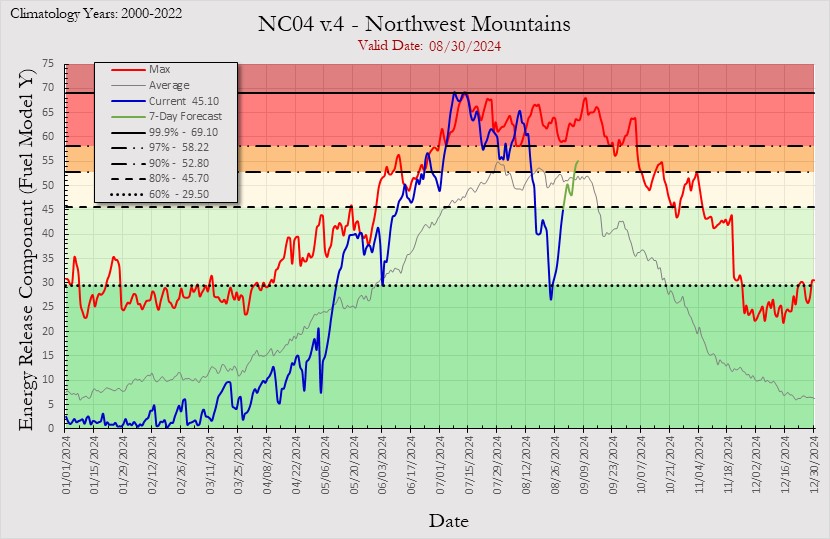
https://www.cpc.ncep.noaa.gov/products/predictions/814day/index.php
It rained up there and on the rough fire east of fresno.
I’m not sure ‘Blaze’ is the proper adjective. Things seem pretty subdued at the moment.
Nor would I probably call a fire that took almost 20 days to burn 4,000 acres a ‘rager’.
After seeing first hand the evacuations in Sonoma County in 2017, 2019, and twice in 2020, 20 people being evacuated seems like dramatization by the journalist. Unless you are one of the 20. I guess your house being 1 of 9, instead of 1of 5,000 doesn’t change much for you.
The upper level low that just moved through the state scoured the monsoonal moisture away. This sequence happened last year with TS Kay and then an upper level low producing excessive rainfall over the deserts. Forecast models are showing subsidence returning to the US as surface cold fronts start to move into the eastern Great Basin and Central US, and I would expect the monsoon is pretty much over except for the advent of a landfalling tropical cyclone in Texas boosting it temporarily in late September. The transition to surface cold fronts should bring offshore winds and compression drying and heating events earlier than expected.
So in “essence” that cold upper level low just mixed out that monsoonal airmass and it manifested as some precipitation in some areas especially to the east.
It’s almost a detriment that we had no large fire activity across the west before offshore wind season hits, as it leaves the maximum burn and vulnerability potential if ignitions occur, and an intact grass crop going into the fall season. Moreover, precipitation deficits across Northern California, the Pacific NW, and desert SW could lead to abnormal fire activity this fall across areas that typically don’t see much fire activity in the fall.
Humidities have dropped significantly in far Northern California since being at 60-70% at 8am. Outlook is for poor recovery overnight, then in the teens next several days. Luckily, we are not looking down the barrel of any major winds at the moment.
90 degrees in Orleans right now…
Been liking this PG&E weather website:
https://pgewam.lovelytics.info/pge_weather_app/
Some interesting fire weather over the next 96 hours for NOPS??
All the NWS offices are not that bullish on storm activity with the cut off low but PDS has issues high risk for three PSA’s.
Looking at the GFS the soundings suggest storms on the mixed side wet and dry. Slower storm motions means more rain cores hitting the ground but also the potential for gustier outflow winds.
The timing of the storm development may allow some storms to hold together after the sun goes down and the steering flow would allow for some storms to make it into the valley north of Yuba City.
High resolution models do show some scattered activity early Sunday am. Greater signature appears to be MEU/Trinity Horn and Tahoe areas.
Once the wave moves through the trough lingers and then eventually moves into the GB.
That trough brings in the first cooler air of the season and might be the driver for a stronger side wind event. Too far out to sign onto anything yet but it would line up with with the standard climate for this time of the year.
